
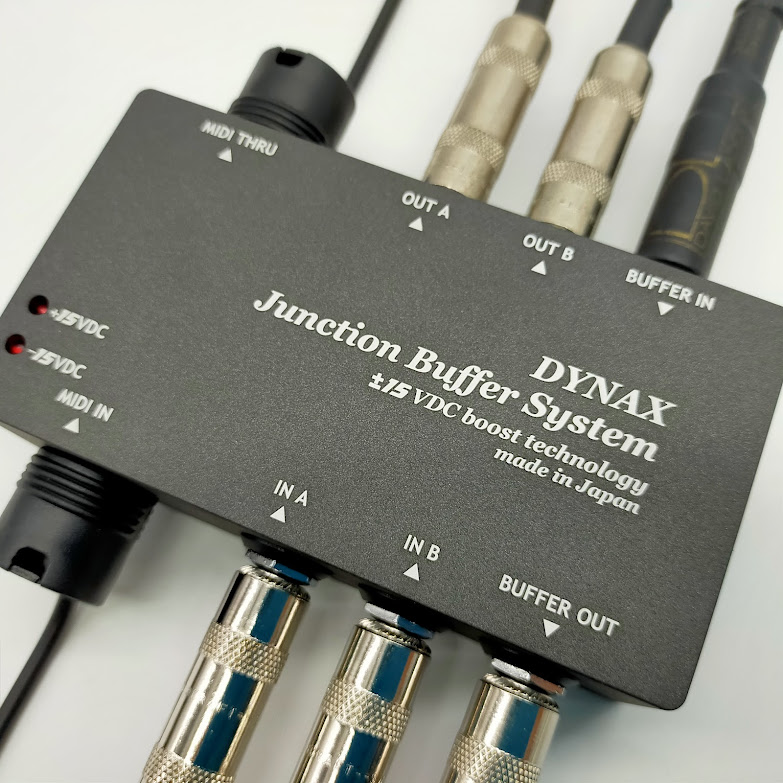
DYNAX JUNCTION BUFFER
Fantastic Sound Quality
Overwhelming dynamics and anti-noise performance with ± 15VDC Boost
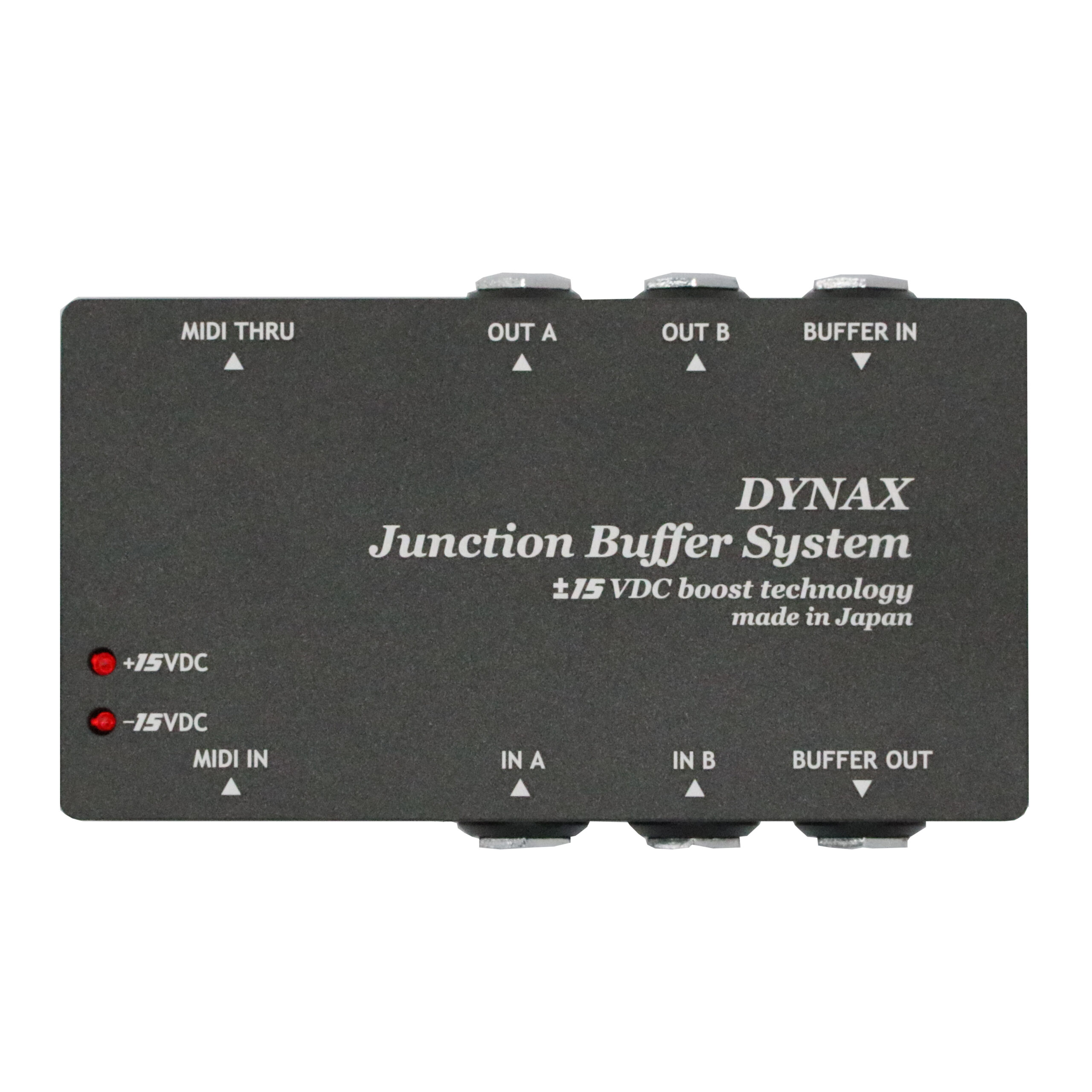
| Product Name | DYNAX JUNCTION BUFFER |
|---|---|
| Overview | Fantastic Sound Quality Shipping and Paypal fees will be added in addition to the product price. If you wish to purchase multiple units, please contact us before order, We will calculate the shipping cost. |
| Price | $219.99 usd |
| JAN code | 4589742978571 |
| Model Number | DYNAX001 |
| sale | |
| Manual | DYNAX JUNCTION BUFFER Manual |
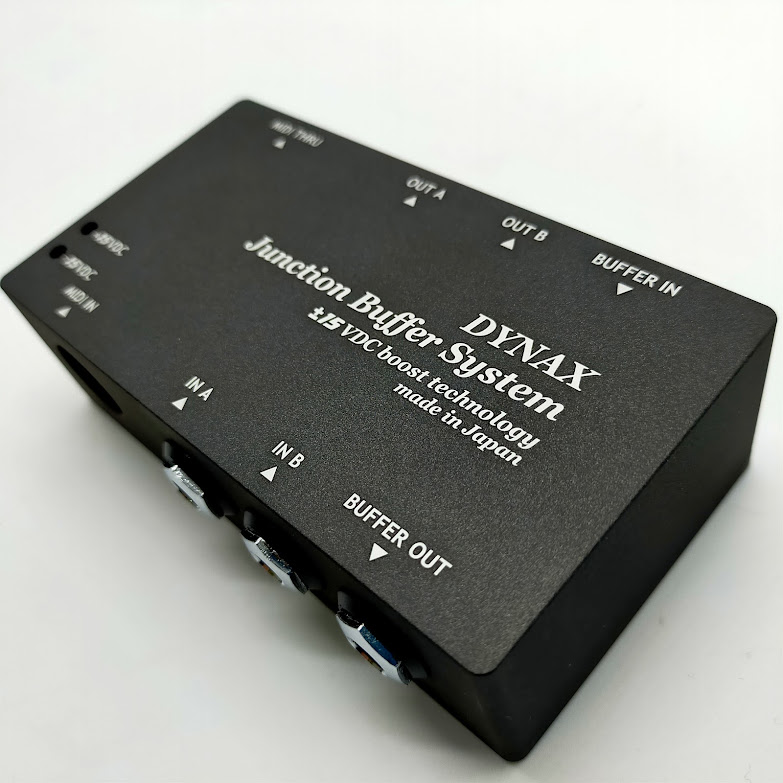
Peak sound quality
DYNAX Junction Buffer is on a different level than your typical guitar accessory.
We proudly present our enormous frequency range, precise dynamics and astounding S/N ratio.
What’s so unique about it?
A typical compact effector has a global standard that runs on 9V, but it actually operates at ± 4.5V internally. This actually is the lower limit of the supply voltage when using op-amp ICs used in effectors, and is far from ideal operation voltage.
We paid close attention to this fact and designed the circuit so that each electronic component operates in their most ideal state. As a result the operating voltage is the same as professional audio equipment, set to ±15VDC.
This ensured an enormous frequency range. As a result, it is possible to convey the original dynamics, range, and amount of information that musical instruments originally produced to the next equipment.
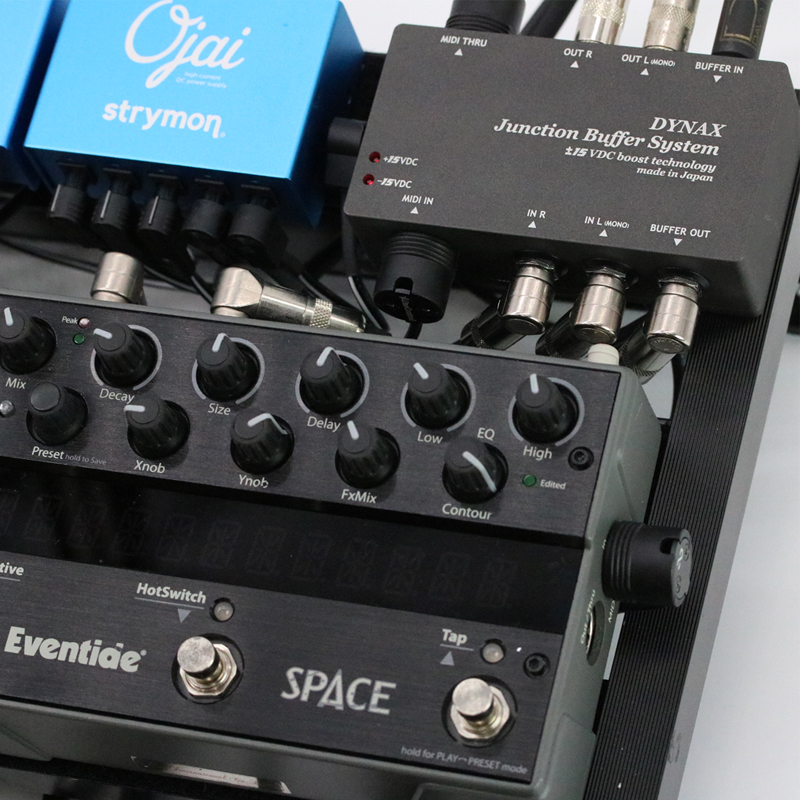
The ideal buffer for guitars
The signal output from the pickup installed in an electric guitar is a very weak, high-impedance signal. This signal is very susceptible to noise and is hard to handle. To avoid this, there are active pickups (pickups with preamplifiers), but many guitarists are hesitant about the change in sound quality and the need for a battery to drive the circuit.
The DYNAX junction buffer allows guitarists who prefer a passive pickup to change their signal to one that is less susceptible to noise by lowering the impedance of the guitar signal.
Furthermore, the DYNAX Junction Buffer uses a high-speed operational amplifier that is best for high-impedance signals.
By generously using passive components (resistors and capacitors) of higher quality than that is used in high-end audio equipment and sound equipment, we provide sound quality that is not affected by playstyle.
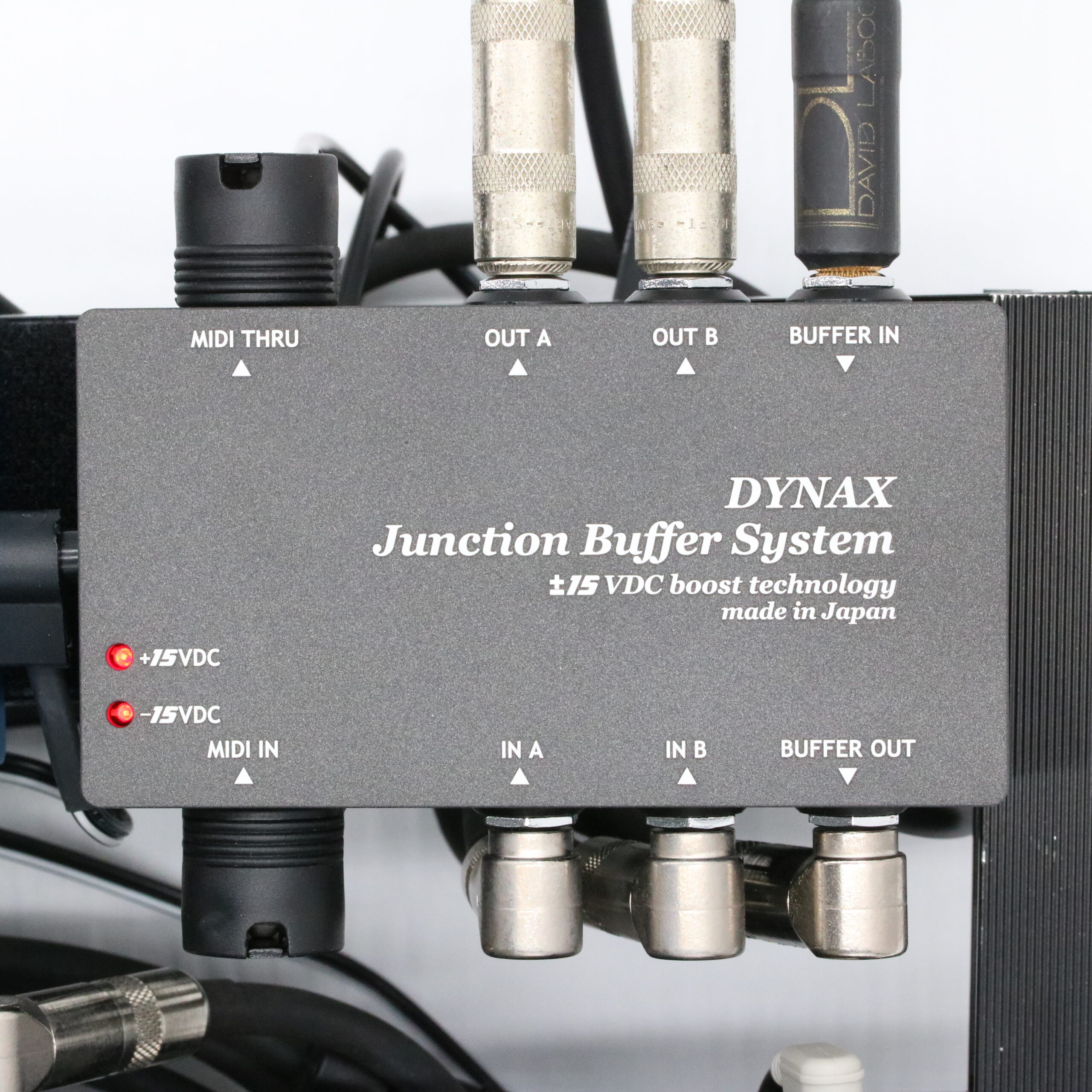
Designed to nullify the deterioration from the shield cable
As mentioned earlier, the signal output from an electric guitar is weak. The quality and the length of the cable used cause deterioration of the signal, in other words, a change in sound quality or a drop in amplitude.
This deterioration can be compensated to some extent with an amplifier, but the information originally output from the guitar cannot be restored.
For example if the maximum input signal is 15 V, and it degrades to 3V due to the cable, a normal buffer with the upper limit of 4.5V will only restore the signal to 4.5V, but our Junction Buffer will restore it to the full 15 V. The amplitude ratio and information is all restored.
This is what we mean when we say that the original sound is restored. DYNAX's built-in buffer eliminates this loss regardless of cable length, and provides the sound as if there is direct connection to the amplifier.
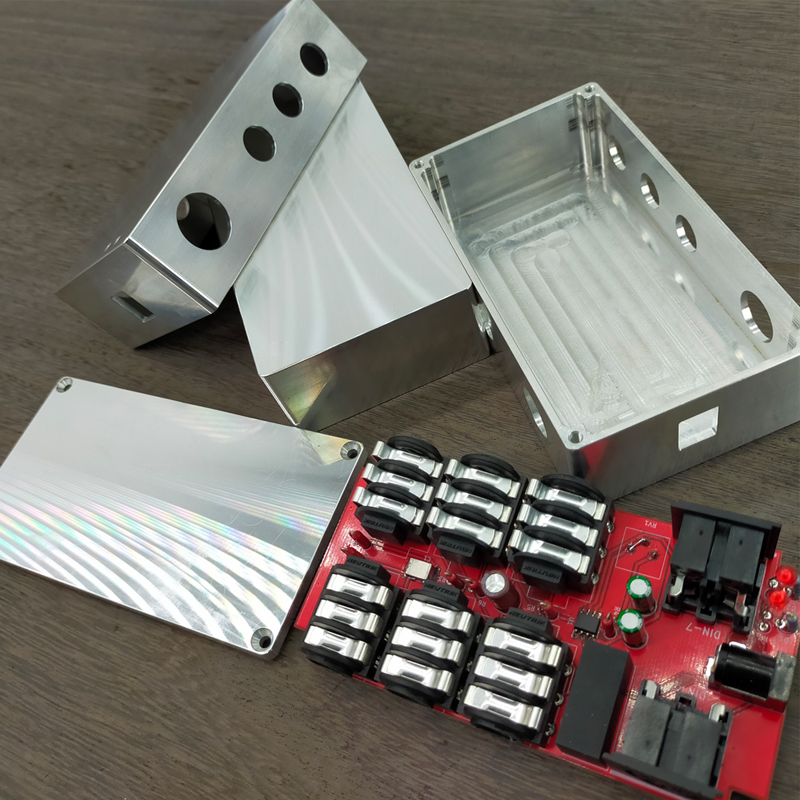
Durable and noise reducing casing
The DYNAX Junction Buffer is the first in the industry and in the world to use machining to create its aluminum case. Unlike the cheap die-cast cases used in common effectors, the special high-density type aluminum can dramatically reduce external noise.
Parts selected for sound quality and durability
For the buffer circuit, which is the core of the DYNAX Junction Buffer, we carefully selected parts with excellent sound quality from all over the world. But we did not compromise on durability either.
Like the vintage historical masterpieces, we ensured that our product will have the best performance even after staying under harsh conditions for extended periods of time.
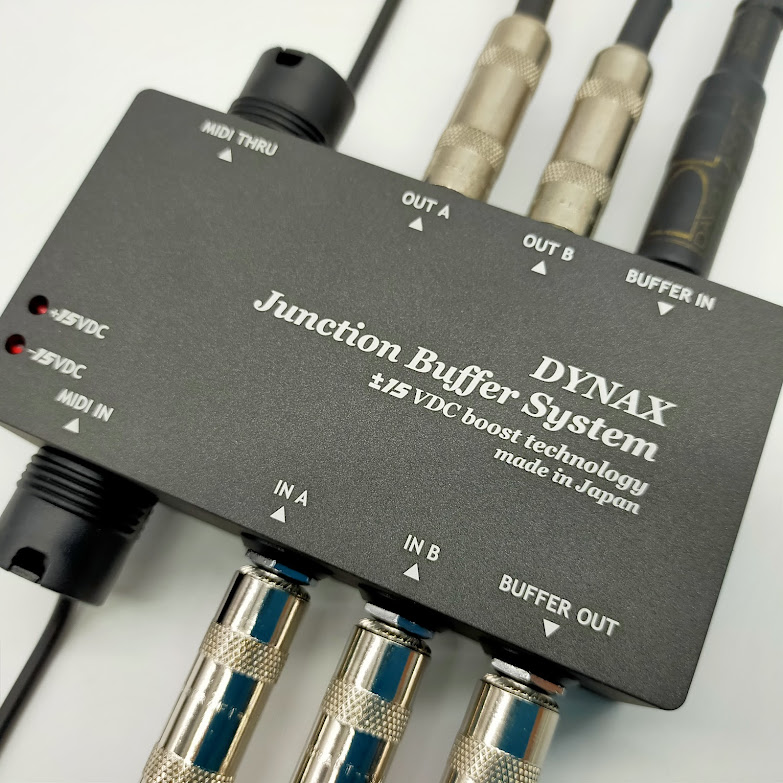
Versatile I/O design
The DYNAX Junction Buffer is equipped with the input/output terminals necessary for building an effect board in addition to the buffer we take pride in.
You can:
・Of course, connect your guitar output
・connect output from the last effector making it easier to set up the stage
The two THRU terminals can be used as audio signal terminals, but can also be used for remote function for external amplifier channel switching via TRS connection.
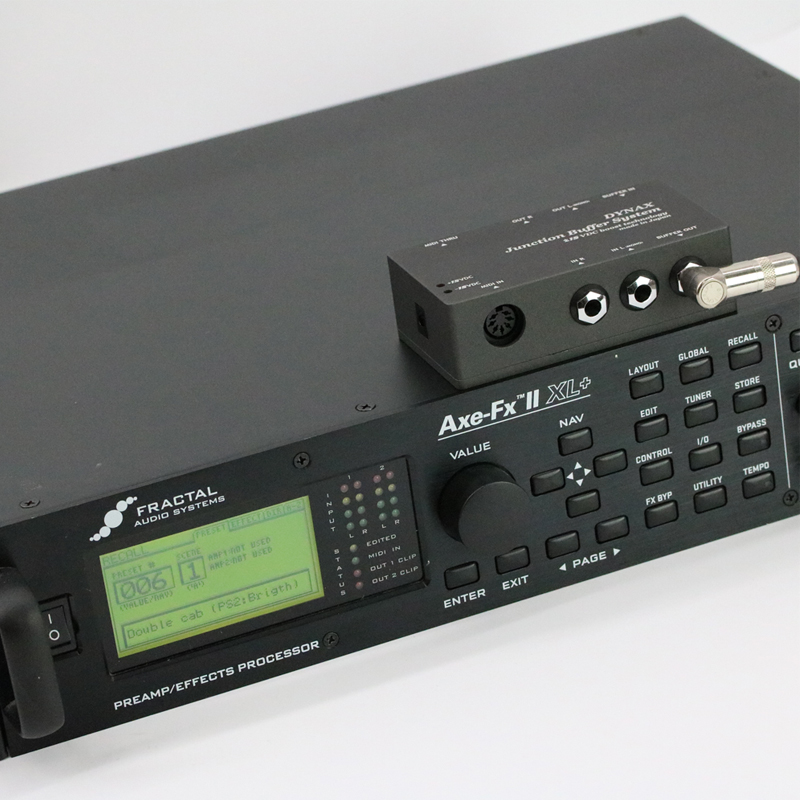
Powerful even when used with a processor
The DYNAX's buffer’s quality shines through when used for effector boards and also when used before guitar processors, which are becoming mainstream in recent years.
When used before hardware such as Fractal Audio, Neural DSP, Kemper, Helix, or audio interfaces when using DAW-based plug-ins, signal input from guitars and basses passed through the DYNAX buffer can pass on the original range and dynamics of the instrument into the processor.
Having the DYNAX junction buffer makes a significant difference in terms of sound quality, and best conveys the flavor of each instrument.

As a clean booster
Inserting the DYNAX junction buffer instead of overdrive pedal or booster pedals in front of vintage amps such as Marshall and Fender or a boutique amp like Dumble, it can be used as an alternative to overdrive or booster, it also acts as a high-quality clean booster.
With a clean buffer performance of ±15V, it is possible to drive the sound without adding nuances to the sound, unlike common overdrive or booster pedals. In addition, it can better convey range and contour.

Set for optimum gain utilizing Trim inside Buffer
You can set the gain according to the situation, such as increasing the gain to compensate for losses when the shield is long. If you want to add color to your tube amp, lower the gain.
If you want to "colorize the amp" or "feel contour and range", set the gain trim lower than 12:00.
Conversely, if you want to drive an amp as a booster or boost a drive pedal, set it higher than 12:00.
Features
- Overwhelming range and dynamics produced by ±15VDC driving power, the same as professional recording equipment.
- Adopts the TPT circuit "True Pass Tone" circuit that sends the instrument's entire original range and tone to the subsequent equipment.
- Uses a positive phase circuit that outputs the same phase as the input signal.
- In addition to usage on the effector board, it is excellent when used with processors such as Fractal, Neural DSP, and Kemper.
- It supports a range that corresponds not only to guitar but also to bass, and line level such as amplifier send return
- Adopts an industry-leading original housing made of high-quality machined aluminum.
- It supports not only guitar range but also bass range and line level for as amp send/return.
- Versatile with audio and MIDI THRU terminals for connecting to other equipment.
- Can be used wirelessly!
In wireless systems, the sound quality can vary significantly. By connecting our junction buffer to the out terminal of the wireless system’s receiver, the sound quality becomes similar to that of a wired connection. - - In the effect loop of the amplifier!
By connecting our junction buffer to the effect loop of a bufferless amplifier, the impedance is converted to a suitable impedance for connecting to a digital effector. - -Compatible with other instruments!
Wideband design that can be used not only for guitar, but also for bass and other instruments. - Q. Is it better to insert the buffer as needed like a drive system effector?
Please leave our product connected by default. As you can see in the product description, the Junction Buffer technology not only functions as a "general buffer" and countermeasures against external due to the quality and length of the shielded cable, but it also boosts the power supply voltage inside to restore the original sound of the guitar.
Therefore, we recommend reviewing each equipment setting and sound creation with Junction Buffer. - Q. Can I create overdrive-like distortion by raising the trim inside the buffer?
You can't distort it, but you can get a clean boost. The effect is similar to that of a booster, but the big difference is that there is no change in sound quality. A general boost pedal will alter the sound, but the Junction Buffer can boost the original sound with almost no change. - Q. Is there a proper value for the internal Gain trim?
There is none in particular, but gain boost is possible by raising the trim. The buffer is the first product to be inserted, so if the guitar’s or the shield’s noise shielding is poor, the noise of the guitar will also be amplified, so please determine the appropriate trim value according to your environment.
When shipping from DYNAX, we ship with a setting that is approximately 25% trim. - Q. I feel that the noise of the amplifier increased when the amplifier was set to drive.
It is working correctly. As mentioned, the buffer has a gain boost. Both the buffer and the booster amplify the input signal to the equipment that is connected immediately after that, so if the amplifier is set to generate noise (Gain, High, Presence, etc.) or if the amplifier is noisy, the noise will be amplified.
Therefore, please check the buffer trim settings and adjust the EQ on the amplifier side. - Q. Two +15VDC and -15VDC lamps are shining.
Junction Buffer operates on positive and negative power supplies like high-end consoles found in recording studios. Two LEDs indicate that it is properly powered by a special power circuit on board. - Q. Is it possible to use a 9V battery?
It can be used if you use the jack for connecting a 9V battery, but we do not recommend it. Junction Buffer requires more current (A) compared to general buffers to drive the power supply boost circuit inside. Therefore, a 9V battery will be used up quickly.
When using our junction buffer, you can supply power from the power supply, but we recommend that you allocate one of the isolated power supplies for Junction Buffer exclusively.
Since the Junction Buffer is not designed to connect to a 9V battery, it is not possible to store the battery inside the housing like a general effector. - Q. Is it possible to use a 9V battery?
The product warranty is for one year from the date of purchase for Japan Only. The warranty card is included in the package with the product, so please check it. Dynax Junction Buffer is great for Reamp!
The Dynax Junction Buffer also works great when reamping due to its sound quality.
In recent guitar recordings, even professionals often record guitars in their own studios and deliver them as Wav data, and the technique called Reamp is used when this is done. When using a normal audio interface (AIF), the guitar track recorded in the DAW (guitar without effects or amplifiers,raw performance data) is sent from the AIF to the Reamp equipment, and then sent to effects pedals or amp heads to create the track.
It is a method of connecting from the out of the to the effector or guitar amplifier head and making sound. The impedance is converted by passing it through Reamp equipment. With this method, even if there is a change in the track other than the guitar for the song, you can change the amp, effector, and various parameters without rerecording the guitar track.
Even in this Reamp technique, the range and contour of the junction buffer can raise your tune to a higher level whether it is clean, crunch, or high gain. Where in the case of a live guitar, the guitar may pick up noise depending on the position of the computer or power supply, but when using a cleanly recorded guitar track, you can boost it with an effector or amplifier without worrying about noise.
In addition, since the output from the Junction Buffer is converted to a low impedance that is resistant to boosted noise, it is possible to create an environment that is less susceptible to external noise when connecting to the next effector or amplifier.
Versatile applications of the Junction Buffer
Junction Buffer Q&A

Specification
| Input Impedance | 1 MΩ |
|---|---|
| Output Impedance | Over 1 kΩ |
| Control | Gain Trim is installed inside the buffer. |
| Terminal | 1/4inch Jack ×6 (Buffer in、Buffer out、THRU)、MIDI THRU、DC9V (center - ) |
| Power | DC9V (center - ) |
| Current consumption | 50 mA |
| Size | 112(W) × 60(D) × 33.5(H)mm |
| Weight | 312g |
| Accessories | Warranty、Manual |

